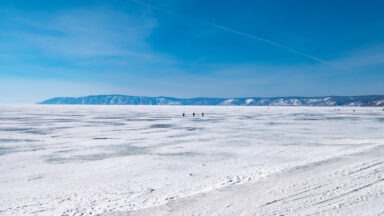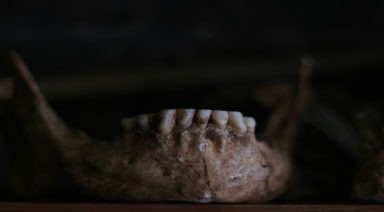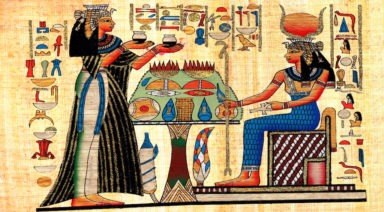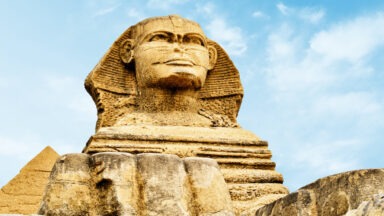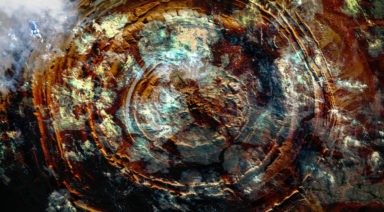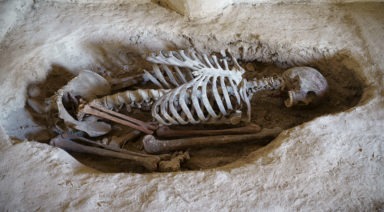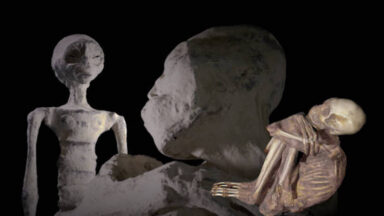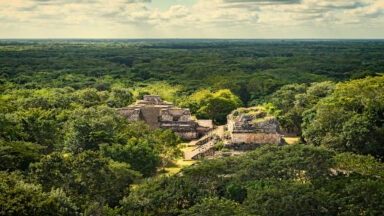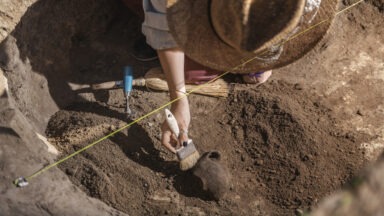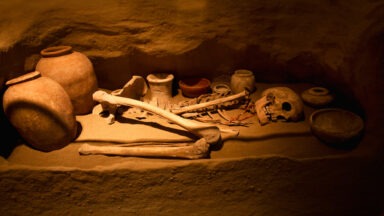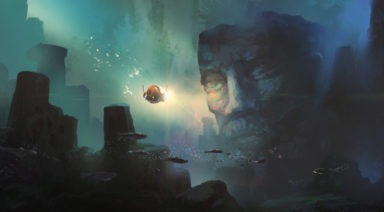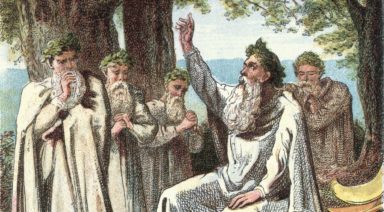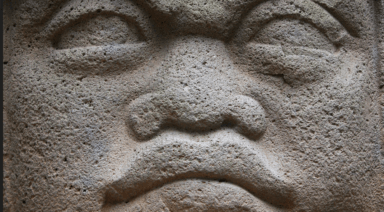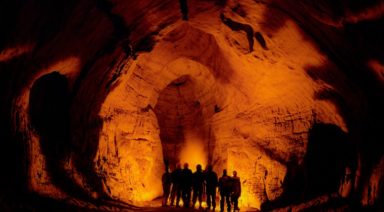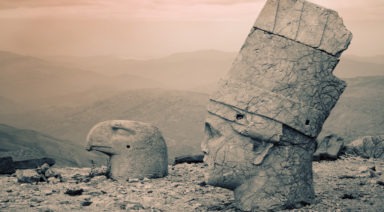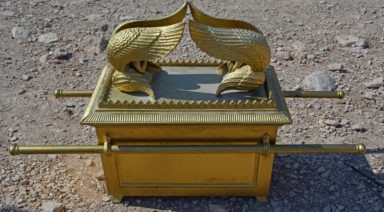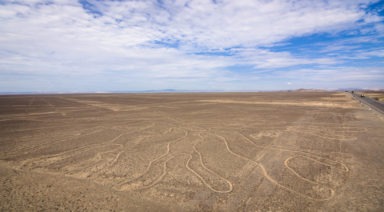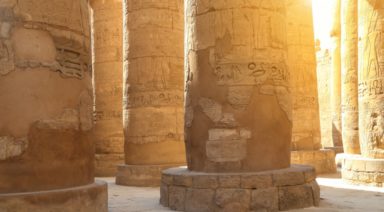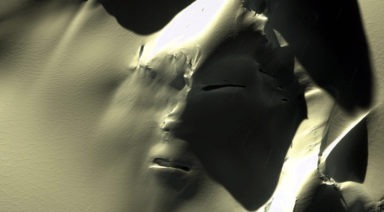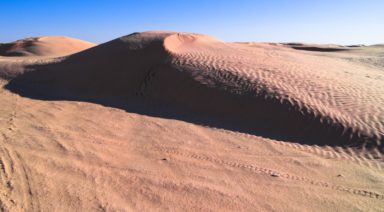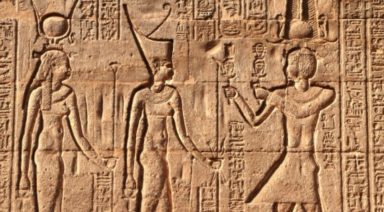Truth In The Myths Of Giants
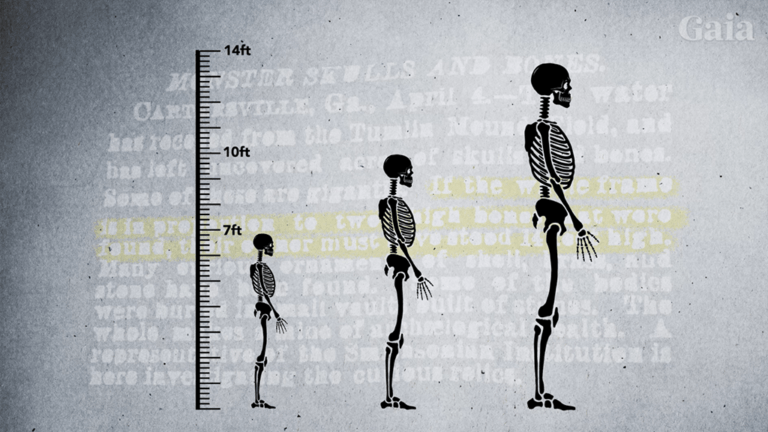
In the summer of 1520, the Spanish expedition led by Portuguese explorer Ferdinand Magellan was well into its circumnavigation of the globe. By the time they reached the shores of Argentina, they had already encountered several native tribes. But there was something special about the natives of this land, and the account from Antonio Pigafetta, the voyage’s official chronicler, would capture the imaginations of Westerners for years to come. According to his journal, the natives of Patagonia, were giants.
Myths and legends of giants go back through every culture in every corner of the world. And in many cases, the mythological aspect of these giants is obvious. Take for example Atlas, the giant from Greek mythology who was tasked with holding the world on his shoulders.
But sometimes, the stories aren’t so heavily exaggerated and there is even evidence that giants did once walk the earth. In the 1800s, as European settlers continued to expand west across the United States they started coming across earthen mounds that had been constructed by native inhabitants of North America. The settlers started excavating the mounds with little regard for the native cultures who had built them for religious, ceremonial, and burial purposes.
And the sensational headlines regarding what was found in those mounds all reported one thing: Skeletons. Giant skeletons. But these weren’t just a few obscure papers, these were reputable sources like the New York Times and Scientific American. Even Abraham Lincoln references the giants in 1848 during a visit to Niagara Falls saying The eyes of that species of extinct giants, whose bones fill the mounds of America, have gazed on Niagara, as ours do now. According to the numerous articles published during this time the skeletons were regularly found to be between seven and ten feet tall. And some even reported taller individuals like the one mentioned in this New York Times article from 1885.
IF THE WHOLE FRAME IS IN PROPORTION TO TWO THIGH BONES THAT WERE FOUND, THEIR OWNER MUST HAVE STOOD 14 FEET HIGH…A REPRESENTATIVE OF THE SMITHSONIAN INSTITUTION IS HERE INVESTIGATING THE CURIOUS RELIC.
The fact that it was being investigated by a representative of the Smithsonian may not seem out of the ordinary, but it appears to be a theme seen throughout these reports. Some believe that the Smithsonian was involved in covering up these artifacts which were often surrendered to the museum for further study. This theory is supported by the fact that no follow up reports, studies, or exhibitions followed the initial reports of these anomalous discoveries. And the accounts become even more compelling when you consider how many oral traditions of the Native American tribes in those regions tell of a race of giants.
In a more recent discovery, 205 graves were unearthed in China’s Shangdong province. The archaeological dig found that a significant number of these men stood around the 6 foot mark, with the tallest man standing at 6’3.” Now this may not seem incredibly tall by today’s standards, after all the average height of today’s NBA player is around 6’7.” But 5,000 years ago, when these Longshan people were still alive, they would have loomed over their neolithic contemporaries who were much shorter by comparison. The Central American Mayans for example had an average male height of 5’2” and an average female height of 4’8.”
The “giants” of Longshan were unusually tall for their time, but their height wasn’t out of the realm of what we consider possible within the established narrative of our past. So what happens when we find evidence that could completely upend that narrative?
In the 1960s, miners in the Otavi Mountains of Northern Namibia discovered the fossilized segment of a femur. The mineralized bone was turned over to Philip Tobias, the late paleoanthropologist from South Africa and it remains in his vault at WITS University in Johannesburg to this day. In Michael Tellinger’s video posted in 2013, he visits Professor Francis Thackeray at the University to view the impressive artifact. The professor identifies the mineralized bone as having belonged to a homo sapien, and when he brings out an average sized femur for comparison, the difference is clear. The fossilized femur appears to be at least twice the size of the normal one. But despite the abnormal size, there seems to be no outside interest in studying or dating the artifact.
One piece of a femur doesn’t exactly amount to proof of a race of giants. But anthropologists agree that there are large gaps in the fossil record that mask absolute truths. Even the researchers who completed the largest study of hominid body size throughout evolution sometimes had to estimate heights based off fragments as small as a single toe bone.
How would our evolutionary tree differ if they had recovered fragments of someone like Robert Wadlow, the tallest man in recorded history. Known as the Giant of Illinois, Wadlow reached a height of 8’ 11” before his death in 1940. He suffered from hyperplasia of his pituitary gland, which results in an abnormally high level of human growth hormone. And most of the well known giants of our time suffered from similar disorders.
This photo shows Wadlow standing next to his father. Harold Wadlow was a man on the taller side of average at 5’11” but standing next to his son, he appears almost dwarf-like, with his head coming up just over his son’s waist. And this comparison happens to be reminiscent of the giants of Patagonia. The following excerpt is from Antonio Pigafetta’s journal:
But one day (without anyone expecting it) we saw a giant who was on the shore [near today’s Puerto San Julián, Argentina] And he was so tall that the tallest of us only came up to his waist.
The account goes on to say that two of these giants were seized as hostages but did not survive the journey back to Spain. Which may sound like a convenient coincidence, but considering that only 18 of the 270 men who began the voyage made it back alive, their odds of survival weren’t so great to begin with. Even Magellan himself didn’t make it back.
Sixty years later, when Sir Francis Drake made it to Patagonia during his circumnavigation, his nephew wrote that Magellan had exaggerated the height of these natives. Stating that the men were only 5 cubits…which is 7 and a half feet…. So even by today’s standards, these were massive people.
We may never know if a race of giants walked the earth, or know for sure how much truth there is to the giant mythologies present throughout every culture. But consider this, most animals that walk the earth today have a giant prehistoric ancestor: Great white sharks have the megaladon who beats their size by about 40 feet; there’s the titanoboa, a snake which reached 42 feet in length; even sloths had a giant ancestor, the megatherium who were as big as modern day elephants.
So is it really out of the realm of possibility for humans to have had giant ancestors too?
Bering Archipelago May Debunk Land Bridge Migration Theory
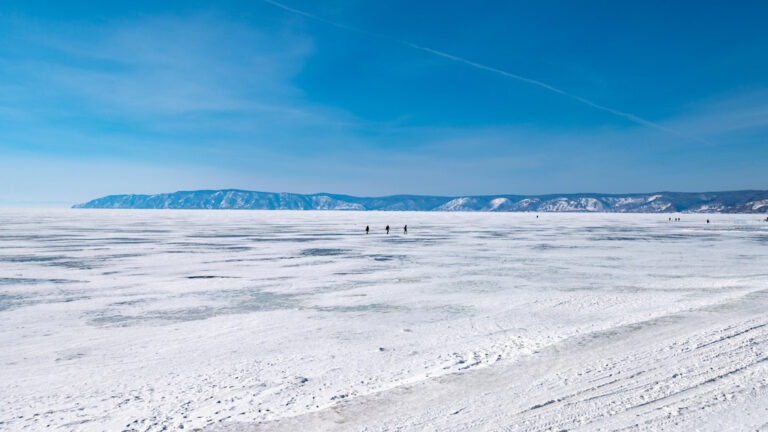
A controversial new study may rewrite the history books on how and when North America was first populated.
Historians and archeologists have tried for years to answer the question, “how did our ancient ancestors first populate North America?”
The most prevalent theory has been the Bering Land Bridge theory—that ice age migrants crossed an ancient landmass from Siberia to North America. But a new theory states that ice age migrants may have used a series of islands, The Bering Transitory Archipelago, to make the crossing and use these islands as stepping stones to get to North America. Using a method called retrospective sea-level mapping, scientists found evidence of an archipelago nearly 900 miles long that existed up to 30,000 years ago.
This theory could debunk the Bering Land Bridge theory, change our understanding of early human migration to North America, and shine a light on maritime technologies they may have possessed.


